
HPU2. Nat. Sci. Tech. Vol 02, issue 03 (2023), 42-50
HPU2 Journal of Sciences:
Natural Sciences and Technology
journal homepage: https://sj.hpu2.edu.vn
Article type: Research article
Received date: 23-10-2023 ; Revised date: 01-12-2023 ; Accepted date: 13-12-2023
This is licensed under the CC BY-NC-ND 4.0
Identification and characterization of genes encoding
phosphoinositide-specific phospholipase C revealed role in
drought stress condition in cassava (Manihot esculenta)
Lan-Huong Do Thia,*, Hoang-Minh Tab, Duc-Ha Chub
a Hanoi Pedagogical University 2, Vinh Phuc, Viet Nam
bUniversity of Engineering and Technology, Vietnam National University, Ha Noi, Viet Nam
Abstract
Phosphoinositide-specific phospholipase C (PI-PLC) has been known as one of the key enzymes that
involved in the phospholipid hydrolysis. However, the PI-PLC family in cassava has not been fully
recorded. In this study, a comprehensive analysis of the PI-PLC family in cassava assembly has been
performed based on various bioinformatics tools. Particularly, a total of seven members of the PI-PLC
family has been identified and annotated in the cassava genome. By using the full-length protein
sequence of each member of the PI-PLC family in cassava, the properties of these proteins, including
the length, size, iso-electric point, instability index, aliphatic index and grand average of hydropathy
were analyzed. More interestingly, the expression patterns of genes encoding the PI-PLC family in
various major organs/tissues in different conditions were investigated. Taken together, this current
study could provide a solid foundation for the PI-PLC family in cassava for further functional
characterization towards the improvements of drought stress tolerance in cassava plants.
Keywords: Cassava, identification, gene expression, phosphoinositide-specific phospholipase C,
drought stress
* Corresponding author, E-mail: dothilanhuong@hpu2.edu.vn
https://doi.org/10.56764/hpu2.jos.2023.2.3.42-50

HPU2. Nat. Sci. Tech. 2023, 2(3), 42-50
https://sj.hpu2.edu.vn 43
1. Introduction
Cassava (Manihot esculenta), a perennial shrub indigenous to the South American region [1, 2],
manifests itself as an indispensable alimentary and industrial resource in numerous tropical locales
worldwide [1, 3]. Serving as a cardinal source of carbohydrates, it underpins the nutritional framework
of over half a billion individuals, particularly in Africa and Asian territories, thus offering a bulwark
against pervasive food insecurities [4, 5]. Beyond its nutritional valence, cassava is esteemed for its
versatile starch, which finds multifaceted applications across varied sectors, including, but not limited
to, the food, textile, and adhesive industries [5-7]. This tuberous plant, through its historical and
contemporary significance, perpetuates its role as a linchpin, anchoring both dietary and industrial
applications in numerous global contexts. However, the effects of water limitation on the growth and
development of cassava can be both multifaceted and profound, given the plant's inherent
susceptibility and responsiveness to variations in its growth environment [8]. While cassava is often
lauded for its drought-tolerance relative to other staple crops, protracted periods of insufficient rainfall
or moisture can deleteriously impact its physiological processes, morphological characteristics, and
overall productivity. In Vietnam, cassava plays an important socio-economic role as a secondary crop.
In the North, the crop is an important source of food and feed at the household level; in the south
mainly as a source of cash income. Cassava and cassava products are one of 13 key agricultural
products for export of Vietnam with an export turnover of 1.35 billion USD/year, ranking 2nd in the
world, only after Thailand. Thus, it would be significant to understand the molecular mechanism of
cassava plant growth, development and regulation of responses to adverse environmental conditions.
In plants, phospholipids have been demonstrated to be an important component of cytoplasmic
membranes [9], and they play a key role in various biological processes [10, 11]. Particularly,
phospholipases, including phospholipase A1, phospholipase A2, phospholipase C (PLC) and
phospholipase D, are responsible for phospholipid hydrolysis [11]. Among them, PLCs are classified
into two sub-families based on their substrates, namely phosphatidylinositol specific PLC (PI-PLC)
and non-specific PLC [12, 13]. Phosphatidylinositol 4,5-bisphosphate can be hydrolyzed by PI-PLC to
produce inositol triphosphate and diacylglycerol, which then release cellular Ca2+ and activate protein
kinase C [13]. Great efforts have been made to report the functions of PI-PLC in plant growth and
development and members of the PI-PLC families were identified and characterized in various higher
plant species, like Arabidopsis thaliana [14], rice (Oryza sativa) [15, 16], soybean (Glycine max) [17],
maize (Zea mays) [18], cotton (Gossypium spp.) [19] and wheat (Triticum aestivum) [20]. However,
the PI-PLC proteins in cassava has not been reported.
The aim of this recent study was to provide a comprehensive analysis of the PI-PLC proteins in
cassava under developmental and drought stress conditions. Particularly, all putative PI-PLC proteins
were identified in the cassava assembly based on the bioinformatics tool. The protein features of each
member of the PI-PLC family in cassava were then analyzed. The expression patterns of genes
encoding the PI-PLC family in various organs were explored based on the previous transcriptome
atlas.
2. Materials and Methods
2.1. Materials
Well-characterized PI-PLC proteins in Arabidopsis available in the previous report [14] were
downloaded for further screening and validation of the PI-PLC proteins in cassava.

HPU2. Nat. Sci. Tech. 2023, 2(3), 42-50
https://sj.hpu2.edu.vn 44
Recent cassava assembly (NCBI RefSeq assembly: GCF_001659605.2), including genome and
proteome [21] in the Phytozome [22] and NCBI databases was used for all in silico analyses in this
study.
Available transcriptome databases of cassava plants, including GSE82279 [23] and GSE98537
[33] available in the GEO NCBI [24] portal were explored to analyze the expression profiles of genes
encoding the PI-PLC family in cassava.
2.2. Screening and validation of the PI-PLC proteins in cassava
The well-characterized PI-PLC proteins in Arabidopsis were used to perform a Blast search
against the current cassava assembly [21] in the Phytozome [22]. All obtained proteins were then
validated by the Pfam tool [25]. Annotation of each member of the PI-PLC family in cassava,
including gene identifier (geneID), protein identifier (proteinID), transcript identifier (transcriptID)
and locus identifier (locusID) were obtained by exploring in the NCBI database. Finally, the full-
length protein sequence, genomic DNA sequence and coding DNA sequence of each member of the
PI-PLC family were collected for further characterization.
2.3. Analysis of the general properties of the PI-PLC proteins in cassava
Full-length protein sequence of each member of the PI-PLC family in cassava was used to
analyze the physico-chemical features as previously reported [26, 27]. Particularly, the Expasy
Protparam tool [28, 29] was used to analyze several general characteristics of each protein sequence,
including size (amino acid residues), mass (kDa), theoretical iso-electric point (acidic, neutral and
basic), instablity index (instability and stability), aliphatic index and grand average of hydropathy
(hydrophilic and hydrophobic).
2.4. Analysis of expresison profiles of genes encoding the PI-PLC proteins in cassava
To analyze the expression levels of genes encoding the PI-PLC family in cassava, the previous
RNA-Seq datasets were explored in the NCBI GEO [30] as previously described [31, 32]. Particularly,
the GSE82279 dataset reported in the previous study [23] was downloaded to re-analyze the
expression patterns of genes encoding the PI-PLC family during the growth and development
processes. Gene identifier of each member of the PI-PLC family in cassava was used to search its
corresponding expression levels in major organs/tissues, including leaf blade, leaf mid-vein, petiole,
stem, lateral bud, storage root, fibrous root [23]. Additionally, the GSE98537 dataset related to
drought stress condition as previously described [33] was also analyzed. More specifically, leaf
samples were collected for drought treatment [33]. The fold-change of each gene was estimated by
comparing between drought treatment and control [33]. A heat map of all expression levels in these
datasets were illustrated by using the R script.
3. Results and Discussion
3.1. Survey of the PI-PLC family in cassava
In order to identify the PI-PLC proteins in cassava, well-characterized PI-PLC members in
Arabidopsis were used search against the current assemblies [21] in the Phytozome [22] and NCBI
databases. As the results, a total of seven members of the PI-PLC family has been found in the cassava
assembly (Table 1). All annotations of each member of the PI-PLC family, including geneID,
transcriptID, proteinID and locusID were then fully provided in Table 1.

HPU2. Nat. Sci. Tech. 2023, 2(3), 42-50
https://sj.hpu2.edu.vn 45
Table 1. Annotation of the PI-PLC family in cassava
#
GeneID
TranscriptID
ProteinID
LocusID
1
Manes.01G161000
XM_021764955
XP_021620647
LOC110620987
2
Manes.02G118900
XM_021747892
XP_021603584
LOC110608625
3
Manes.02G119000
XM_021747838
XP_021603530
LOC110608574
4
Manes.02G119100
XM_021750019
XP_021605711
LOC110610146
5
Manes.04G025600
XM_021755289
XP_021610981
LOC110613893
6
Manes.10G012700
XM_021770314
XP_021626006
LOC110624891
7
Manes.10G012800
XM_021769869
XP_021625561
LOC110624649
Previously, a number of the PI-PLC families has been identified in higher plant spcies. For
example, at least six members of the PI-PLC family, namely from AtPI-PLC01 to AtPI-PLC07 have
been found in Arabidopsis [14]. A total of four PI-PLC proteins was identified in rice [15, 16], while
the PI-PLC family in maize contained five members [18]. Recently, 12 members of the PI-PLC family
have been reported in cotton [19], while 11 members of the PI-PLC family in wheat have been well-
characterized [20]. In constrast, very few members have been reported in chlorophyta [19].
Specifically, only one PI-PLC protein were found to exist in Ostreococcus lucimarinus,
Chlamydomonas reinhardtii and Volvox carteri [19]. In moss species, a total of seven members of the
PI-PLC family has been found in Physcomitrella patens [19]. In this study, according to the recent
assembly of cassava, seven members of the PI-PLC family were found (Table 1). Taken together, this
analysis revealed that the PI-PLC proteins in higher plant species is multi-gene family.
3.2. Properties of the PI-PLC family in cassava
In order to investigate the features of the PI-PLC family in cassava, the full-length protein
sequence of each member was analyzed by using the Expasy Protparam tool [28, 29] as previously
reported [26, 27]. As the results, six common properties of proteins, including protein size, protein
mass, theoretical iso-electric point, instablity index, aliphatic index and grand average of hydropathy
were explored. Table 2 provided a detailed information of the characteristics of the PI-PLC family in
cassava.
Table 2. Characteristics of the PI-PLC family in cassava
#
PI-PLC family
Size
Mass
pI
II
AI
GRAVY
1
Manes.01G161000
584
66.76
7.14
39.61
72.07
-0.54
2
Manes.02G118900
568
65.42
6.75
49.32
78.93
-0.51
3
Manes.02G119000
594
67.25
7.91
40.68
75.32
-0.46
4
Manes.02G119100
615
70.19
6.81
39.53
76.08
-0.57
5
Manes.04G025600
539
61.26
5.12
42.16
81.74
-0.42
6
Manes.10G012700
592
67.70
6.22
50.60
82.33
-0.46
7
Manes.10G012800
600
68.78
8.23
48.59
76.53
-0.51
Note: pI - Theoretical iso-electric point, II - Instability index, AI - Aliphatic index, GRAVY -
Grand average of hydropathy.
According to Table 2, the protein size of the PI-PLC family in cassava ranged from 539
(Manes.04G025600) to 615 (Manes.02G119100) amino acid residues. The PI-PLC family in cassava
were varied from 61.26 (Manes.04G025600) to 70.19 (Manes.02G119100) kDa in masses (Table 2).

HPU2. Nat. Sci. Tech. 2023, 2(3), 42-50
https://sj.hpu2.edu.vn 46
Next, four (out of seven) members of the PI-PLC family in cassava, including Manes.02G118900,
Manes.02G119100, Manes.04G025600 and Manes.10G012700 exhibited scores of iso-electric point
less than 7.0 (acidic), whereas three remaining PI-PLC proteins, including Manes.01G161000,
Manes.02G119000 and Manes.10G012800 were basic (iso-electric point more than 7.0) (Table 2).
Based on the scores of instablity index, it has been found that only two members of the PI-PLC family
in cassava, including Manes.01G161000 and Manes.02G119100 were stable (instablity index less than
40.0), whereas five (out of seven) members of the PI-PLC family in cassava, including
Manes.02G118900, Manes.02G119000, Manes.04G025600, Manes.10G012700 and
Manes.10G012800 were unstable in the test tube (instablity index more than 40.0) (Table 2).
Additionally, the scores of aliphatic index of all members of the PI-PLC family in cassava were varied
from 72.07 (Manes.01G161000) to 82.33 (Manes.10G012700) (Table 2). Finally, the grand average of
hydropathicity values of all proteins were less than 0 indicated that all members of the PI-PLC family
in cassava are hydrophilic (Table 2).
Previously, characteristics of the PI-PLC families in higher plant species have been
comprehensively reported. For example, the PI-PLC proteins in wheat ranged from 585 - 733 amino
acid residues, with masses of 65.7 to 71.1 kDa [20]. The iso-electric points of the PI-PLC proteins in
wheat were less than 7.0, suggested that these proteins were slightly acidic [20]. The grand average of
hydropathy of the PI-PLC proteins were also less than 0, revealing that members of the PI-PLC family
in wheat were hydrophilic [20]. Similarly, the protein sizes of the PI-PLC proteins in rice were
reported to be comparable, ranging from 591 - 599 amino acid residues, except for OsPLC2 (491
amino acid residues) [15]. In cotton, the PI-PLS proteins were varied from 541 to 1076 amino acid
residues in lengths and from 61.44 to 122.50 kDa in weights [19]. Only five (out of 12) PI-PLC
proteins in cotton were basic (iso-electric points more than 7.0), whereas seven (out of 12) PI-PLC
proteins were acidic (iso-electric points less than 7.0) [19]. Taken together, our comparisons suggested
that the PI-PLC families in higher plant species exhibited a slightly variable characteristics.
3.3. Expression patterns of genes encoding the PI-PLC family in cassava during the developmental
process
In order to get insight into the function of genes encoding the PI-PLC family in cassava, their
expression levels in various organs/tissues during the growth and development of cassava plants were
re-analyzed based on the available RNA-Seq dataset [23]. As provided in Figure 1, all genes encoding
the PI-PLC family in cassava exhibited diferential expression levels in various major organs/tissues.
Particularly, the expression patterns of three genes, including Manes.01G161000, Manes.02G118900
and Manes.02G119000 in all tested organs were not expressed or below the limits of detectable
expression (Figure 1). It found that Manes.02G119100 was tend to express in lateral bud, while
Manes.04G025600 was noted to be mainly expressed in leaf blade and leaf mid-vein samples (Figure
1). Interestingly, two remaining genes, Manes.10G012700 and Manes.10G012800 were specifically
expressed in lateral bud and storage root (Figure 1).






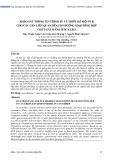
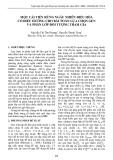
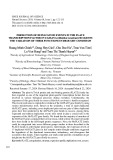
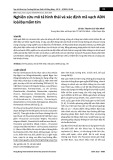
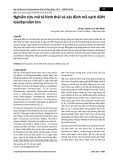




![Bài giảng Giáp xác chân mái chèo [mới nhất]](https://cdn.tailieu.vn/images/document/thumbnail/2025/20250927/lethihongthuy2402@gmail.com/135x160/92891759114976.jpg)



![Tài liệu học tập Chuyên đề tế bào [mới nhất]](https://cdn.tailieu.vn/images/document/thumbnail/2025/20250906/huutuan0/135x160/56151757299182.jpg)






